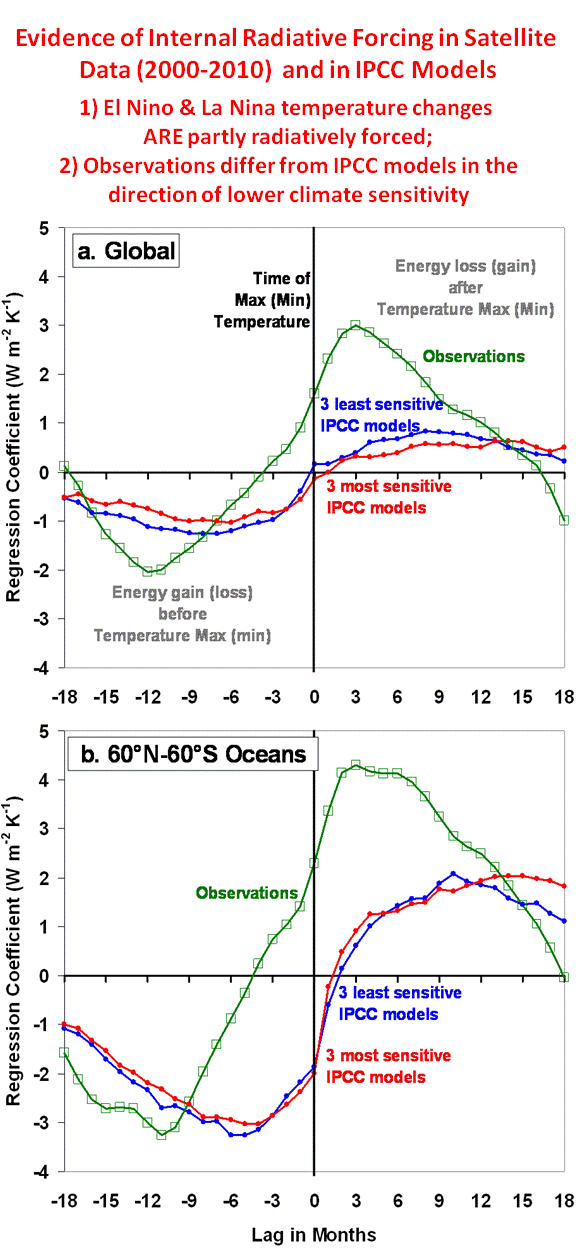Some of you might remember last year’s little dust-up between Andy Dessler and me over feedbacks in the climate system.
Our early-2010 paper showed extensive evidence of why previous attempts to diagnose feedbacks (which determine climate sensitivity) have likely led to overestimates of how sensitive the climate system is to forcings like that from increasing CO2. The basic reason is that internal radiative forcing from natural cloud variations causes a temperature-radiation relationship in the data which gives the illusion of high climate sensitivity, even if climate sensitivity is very low.
Dessler’s late-2010 paper basically blew off our arguments and proceeded to diagnose cloud feedback from satellite data in the traditional manner. His justification for ignoring our arguments was that since: 1) most of the temperature variability during the satellite record was due to El Nino and La Nina (which is true), and 2) no one has published evidence that ‘clouds cause El Nino and La Nina’, then he could ignore our arguments.
Well, our paper entitled On the Misdiagnosis of Surface Temperature Feedbacks from Variations in Earth’s Radiant Energy Balance which refutes Dessler’s claim, has just been accepted for publication. In it we show clear evidence that cloud changes DO cause a large amount of temperature variability during the satellite period of record, which then obscures the identification of temperature-causing-cloud changes (cloud feedback).
Along with that evidence, we also show the large discrepancy between the satellite observations and IPCC models in their co-variations between radiation and temperature:

Given the history of the IPCC gatekeepers in trying to kill journal papers that don’t agree with their politically-skewed interpretations of science (also see here, here, here, here), I hope you will forgive me holding off for on giving the name of the journal until it is actually published.
But I did want to give them plenty of time to work on ignoring our published research as they write the next IPCC report. 🙂
And this is not over…I am now writing up what I consider to be our most convincing evidence yet that the climate system is relatively insensitive.

 Home/Blog
Home/Blog



